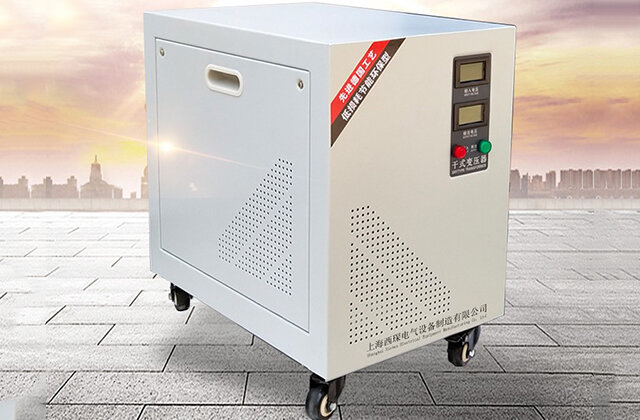Key points for transformer maintenance
1. Allowable temperature
When the transformer is running, its coils and iron core generate Copper loss and iron loss, these losses turn into heat energy, causing the temperature of the core and coil of the transformer to rise. If the temperature exceeds the allowable value for a long time, the insulation will gradually lose its mechanical elasticity and cause the insulation to age.
The temperature of each part of the transformer is different when the transformer is running. The temperature of the coil is the highest, followed by the temperature of the iron core. The temperature of the insulating oil is lower than the temperature of the coil and the iron core. The upper oil temperature of the transformer is higher than the lower oil temperature. The allowable temperature during transformer operation is checked based on the upper oil temperature. For a transformer with Class A insulation during normal operation, when the ambient air temperature is up to 400C, the ultimate operating temperature of the transformer winding is 1050C. Since the temperature of the winding is 100C higher than the oil temperature, in order to prevent the deterioration of the oil quality, the maximum oil temperature of the upper layer of the transformer is stipulated not to exceed 950C. Under normal circumstances, to prevent excessive oxidation of the insulating oil, the upper oil temperature should not exceed 850C. For transformers using forced oil circulation water cooling and air cooling, the upper oil temperature should not frequently exceed 750C.
2. Allowed temperature rise
Only monitoring the upper oil temperature during operation of the transformer cannot guarantee the safe operation of the transformer. The upper oil temperature must also be monitored The temperature difference with the cooling air—that is, the temperature rise. The difference between the transformer temperature and the surrounding air temperature is called the temperature rise of the transformer. For transformers with Class A insulation, when the maximum ambient temperature is 400C, the national standard stipulates that the temperature rise of the winding is 650C, and the allowable temperature rise of the upper oil temperature is 550C. As long as the temperature rise of the transformer does not exceed the specified value, the transformer can be guaranteed to operate safely within the specified operating life under rated load.

3. Reasonable capacity
During normal operation, The electrical load that the transformer can withstand should be about 75-90% of the rated capacity of the transformer.
4. The maximum unbalanced current of the low-voltage transformer shall not exceed 25% of the rated value; the allowable range of the transformer power supply voltage change is plus or minus 5% of the rated voltage
If it exceeds this range, a tap changer should be used to adjust the voltage so that the voltage reaches the specified range. (Adjustment should be carried out during power outage) Usually the changeThe position of the tap tap of the primary winding realizes voltage regulation. The device that connects and switches the tap tap position is called a tap changer. It adjusts the transformation ratio by changing the number of turns of the high-voltage winding of the transformer. Low voltage has no effect on the transformer itself, it only reduces some output, but it has an impact on electrical equipment; when the voltage increases, the magnetic flux increases, the core is saturated, the core loss increases, and the temperature of the transformer increases.
5. Overload
Overload can be divided into two situations: normal overload and accident overload. Normal overload is caused by the increase in user power consumption under normal power supply conditions. It will increase the temperature of the transformer, causing accelerated aging of the transformer insulation and reducing its service life. Therefore, overload operation is generally not allowed. Under special circumstances, the transformer can be overloaded for a short period of time, but it must not exceed 30% of the rated load in winter and 15% of the rated load in summer. In addition, the overload capacity of the transformer should be determined based on the temperature rise of the transformer and the manufacturer’s specifications.
When an accident occurs in the power system or user substation, in order to ensure continuous power supply to important equipment, the transformer is allowed to be overloaded for a short period of time, that is, accident overload. An accident overload will cause the coil temperature to exceed the allowable level. value, so the insulation ages faster than normal conditions. However, there is little chance of accidental overload. Under normal circumstances, the transformer operates under load, so a short-term overload may damage the insulation of the transformer. The time and multiple of accident overload should be implemented according to the manufacturer’s regulations.
Statement: The above content comes from the program system index or netizen sharing. It is for your reference only and does not represent the research views of this website. Please pay attention to the authenticity and authority of the source of the content. Apply for deletion >> Correction >>
If the website content violates your rights, please contact us to delete it。








